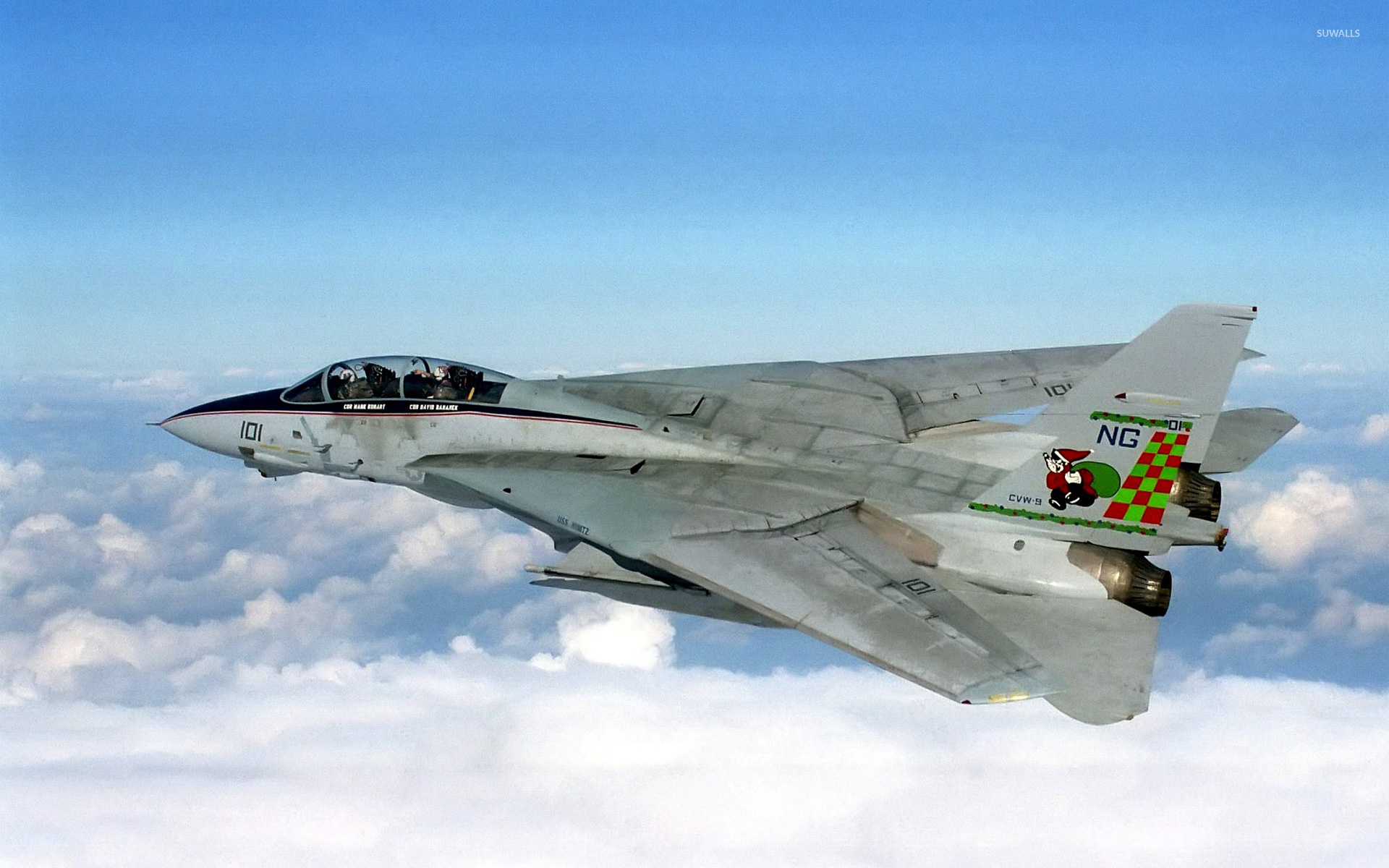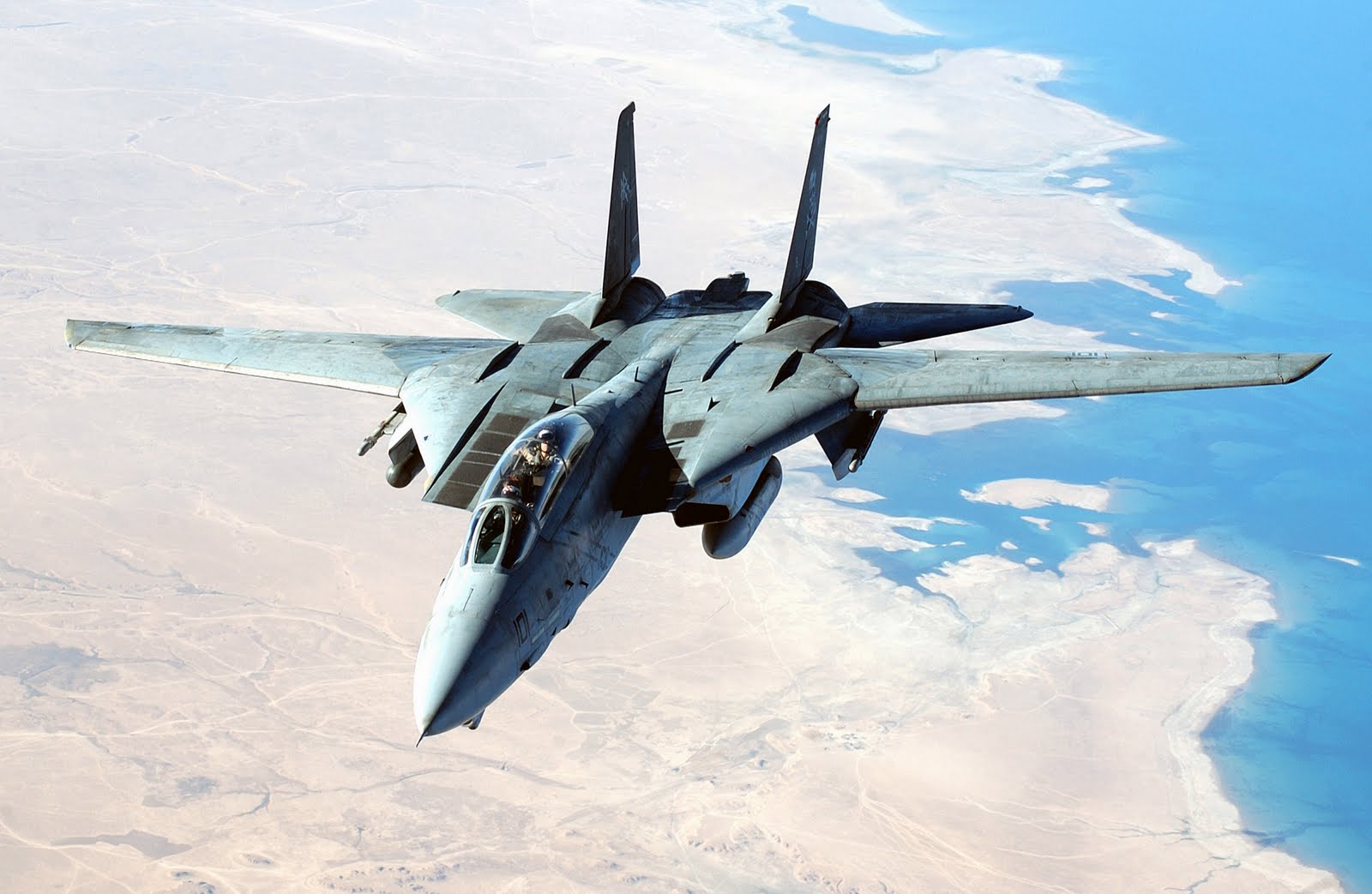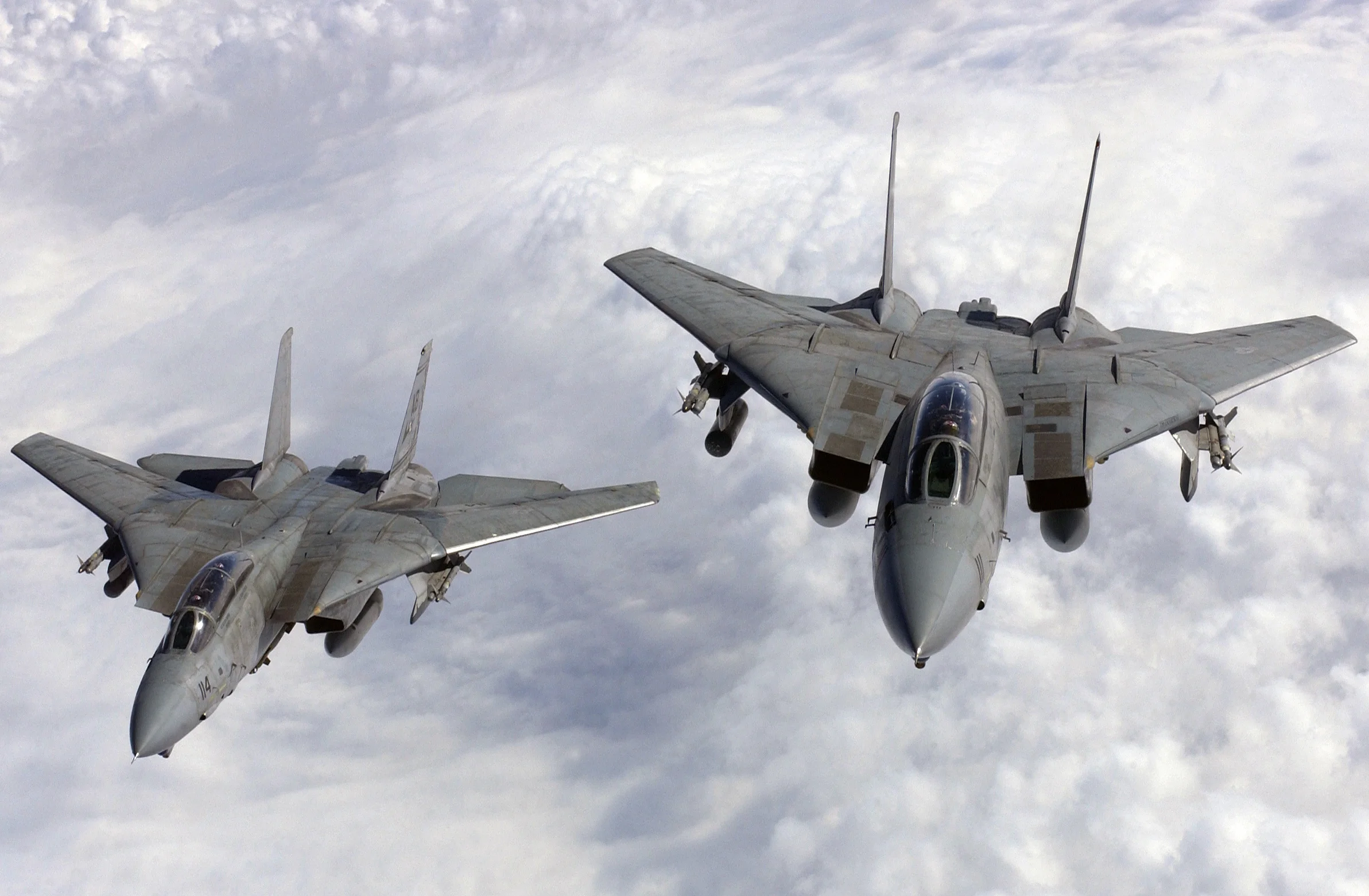Iran's Air Supremacy: The F-14 Tomcat's Legacy In The Iran-Iraq War
In the annals of military aviation, few aircraft command as much awe and respect as the Grumman F-14 Tomcat. An icon of American air power, immortalized in popular culture, its story is often told through the lens of its service with the United States Navy. However, a lesser-known yet equally compelling chapter of its history unfolds far from Hollywood, in the turbulent skies over the Middle East. It is here, during the brutal and protracted Iran-Iraq War (1980-1988), that the F-14 Tomcat truly cemented its legend, becoming the undisputed king of the air for the Islamic Republic of Iran Air Force (IRIAF), defying expectations and geopolitical odds to dominate a conflict that reshaped the region.
This article delves into the extraordinary saga of the F-14 in Iranian hands, exploring the strategic decisions that led to its acquisition, the challenges it faced, and its unparalleled combat performance against a numerically superior adversary. Far from being a mere footnote, the F-14's role was central to Iran's ability to defend its airspace and vital infrastructure, proving its worth beyond any doubt in one of the 20th century's most devastating conflicts. Its legacy continues to resonate, a testament to its advanced design and the ingenuity of those who kept it flying under the most arduous circumstances.
Table of Contents
- The Genesis of a Legend: How the F-14 Tomcat Came to Be
- "Why it Flies for Iran": The Shah's Strategic Vision
- The F-14 Tomcat in Iranian Service: A Pre-War Overview
- The Iran-Iraq War Erupts: A Test by Fire for the F-14
- Dominance in the Skies: The F-14's Combat Prowess
- Beyond Air Superiority: The F-14 as a Multi-Role Asset
- Maintaining the Fleet: The Challenge of Sanctions
- The Enduring Legacy of the F-14 in Iran
The Genesis of a Legend: How the F-14 Tomcat Came to Be
The story of the F-14 Tomcat is one of ambition, technological innovation, and ultimately, redemption. Its origins are rooted in a program that, ironically, was considered a failure. In the 1960s, the U.S. Navy sought a long-range interceptor to protect its carrier battle groups from Soviet bomber threats. This led to the development of the F-111B, a naval variant of the controversial F-111 Aardvark. However, the F-111B proved too heavy, underpowered, and ill-suited for carrier operations, leading to its eventual cancellation. This pivotal moment opened the door for a new design, specifically tailored to the Navy's unique requirements.
Out of this perceived failure, the Tomcat evolved. Grumman, a company with a storied history of building naval aircraft, stepped forward with a design that would become legendary. The F-14 was conceived as a dedicated fleet air defense fighter, capable of engaging multiple threats simultaneously at long ranges. Its defining features included its distinctive variable-sweep wings, which allowed for optimal performance across a wide range of speeds and altitudes, and its revolutionary AN/AWG-9 radar system, capable of tracking up to 24 targets and engaging six simultaneously with the AIM-54 Phoenix missile. This combination of speed, range, and firepower made the F-14 a formidable weapon system, unlike anything else in the world at the time. It was a true technological marvel, designed to be the ultimate guardian of the seas, a role it would perform with distinction not only for the United States but also, quite unexpectedly, for Iran.
"Why it Flies for Iran": The Shah's Strategic Vision
The question of "Why it flies for Iran" is crucial to understanding the F-14's unique history. The answer lies in the geopolitical landscape of the early 1970s and the strategic foresight of Mohammad Reza Pahlavi, the Shah of Iran. At this time, the Shah felt increasingly threatened by neighboring Iraq and Russia. Iraq, under Saddam Hussein, was rapidly modernizing its military with Soviet assistance, posing a direct threat to Iran's western borders and its vital oil infrastructure. Simultaneously, the Soviet Union, a superpower with vast military capabilities, shared a long and often tense border with Iran. Indeed, Iran began reconnaissance flights over the Soviet Union in the late 1950s, with the Soviets responding in kind, highlighting the ongoing intelligence and military rivalry.
To counter these growing threats and assert Iran's regional dominance, the Shah embarked on an ambitious military modernization program. He sought the most advanced weaponry available, and his eyes quickly turned to the F-14 Tomcat. Despite its astronomical cost, the Shah recognized the F-14's unparalleled capabilities, particularly its long-range intercept and multi-target engagement potential, as precisely what Iran needed to establish air superiority and deter potential aggressors. In 1974, Iran placed an order for 80 F-14As, along with hundreds of AIM-54 Phoenix missiles, spare parts, and training for pilots and ground crews. This massive deal, dubbed "Project Persian King," was the largest foreign military sale in U.S. history at the time, underscoring the Shah's determination to equip his air force with the best. This strategic decision would prove to be a lifeline for Iran when the inevitable conflict with Iraq erupted, demonstrating the farsightedness of acquiring the F-14 Tomcat.
The F-14 Tomcat in Iranian Service: A Pre-War Overview
The arrival of the F-14 Tomcats in Iran marked a new era for the Imperial Iranian Air Force (IIAF). The first Tomcats were delivered in 1976, and the process of integrating these complex machines into the Iranian air force began immediately. Iranian pilots and ground crews underwent intensive training in the United States, learning to master the F-14's advanced systems, including its sophisticated radar and the powerful Phoenix missile. The initial batch of aircraft was largely similar to their U.S. Navy counterparts, though there were some export restrictions on the most sensitive technologies. Nevertheless, even with these minor limitations, the F-14 represented a quantum leap in Iranian air defense capabilities.
However, this period of technological advancement was abruptly cut short by the Iranian Revolution in 1979. The revolution dramatically altered Iran's relationship with the United States, leading to the imposition of severe sanctions and an arms embargo. This meant that the flow of spare parts, technical support, and further aircraft deliveries ceased almost overnight. Of the 80 F-14s ordered, only 79 were delivered before the revolution. The newly formed Islamic Republic of Iran Air Force (IRIAF) inherited a formidable, yet incredibly complex, fleet of F-14s, but without the crucial logistical support from its manufacturer. This presented an unprecedented challenge: how to keep these highly advanced aircraft flying in the face of international isolation and a looming war. The ingenuity and dedication of Iranian engineers and technicians would be severely tested, transforming the F-14 from a mere piece of hardware into a symbol of national resilience.
The Iran-Iraq War Erupts: A Test by Fire for the F-14
The simmering tensions between Iran and Iraq finally boiled over on September 22, 1980, when Iraq launched a full-scale invasion of Iran. Saddam Hussein, emboldened by Iran's post-revolutionary chaos and perceived military weakness, aimed to seize disputed territories and assert Iraqi dominance in the Persian Gulf. The invasion caught Iran largely off guard, and its military, including the IRIAF, was still reeling from the purges and disruptions of the revolution. Many experienced pilots and technicians had been arrested or fled, and the F-14 fleet, while powerful, was facing severe maintenance issues due to the lack of spare parts.
Despite these immense challenges, the F-14 Tomcat was immediately thrust into the forefront of the conflict. Its long-range radar and missile capabilities made it the primary defender of Iran's vital airspace, particularly its oil fields and population centers. Iraqi air force, equipped primarily with Soviet-made MiG-21s, MiG-23s, and Su-22s, initially enjoyed numerical superiority. However, they soon discovered that facing the F-14 was a vastly different proposition from anything they had encountered. The war quickly became a proving ground for the F-14, demonstrating its combat effectiveness in a way that even its designers might not have fully anticipated. The performance of the F-14 Tomcat during the war with Iraq confirmed the Iranian decision to acquire it beyond any doubt, solidifying its reputation as a premier air superiority fighter.
Dominance in the Skies: The F-14's Combat Prowess
The Iran-Iraq War provided the F-14 Tomcat with its true baptism of fire, and it emerged as an unparalleled air superiority fighter. Against a diverse array of Iraqi aircraft, the Tomcat consistently demonstrated its technological advantage, racking up an impressive number of air-to-air victories. Its ability to detect, track, and engage multiple targets from beyond visual range proved to be a decisive factor in many engagements, often deterring Iraqi pilots before they even knew they were being targeted.
The Phoenix Missile: A Game Changer
Central to the F-14's dominance was its formidable weapon system, the AIM-54 Phoenix missile. This radar-guided, long-range air-to-air missile was unique to the F-14 and provided it with an unmatched "reach." Capable of engaging targets at distances exceeding 100 miles, the Phoenix allowed Iranian F-14s to launch attacks long before Iraqi fighters could even detect them. This created a profound psychological and tactical advantage. Iraqi pilots quickly learned to fear the F-14, knowing that they could be targeted from seemingly nowhere. The sheer range and destructive power of the Phoenix missile forced Iraqi pilots to adopt more cautious tactics, often breaking off attacks or avoiding areas where F-14s were known to operate. This weapon system alone justified much of the F-14's acquisition cost, proving invaluable in the context of the Iran-Iraq War.
Unmatched Air-to-Air Kills
The statistics speak volumes about the F-14's combat effectiveness. While exact figures are often debated and difficult to verify definitively due to the nature of wartime claims and the secrecy surrounding Iranian operations, reputable sources suggest that around 180 Iraqi aircraft fell to Grumman’s deadly Tomcat. This makes the F-14 by far the most successful interceptor of the war. Of these kills, a significant number can be attributed to individual Iranian aces. For instance, Colonel Jalil Zandi, an Iranian F-14 pilot, is credited with at least 11 confirmed air-to-air victories, making him the most successful F-14 pilot in history and one of the most successful fighter pilots of the war. Other notable Iranian F-14 pilots also achieved multiple kills, cementing the aircraft's reputation.
Iranian F-14 pilots, despite facing severe logistical constraints, developed innovative tactics to maximize their aircraft's potential. They often operated in pairs, using one F-14 to lure Iraqi aircraft into range while the other positioned for a Phoenix shot. Their superior radar and missile capabilities allowed them to dictate the terms of engagement, often forcing Iraqi pilots to flee or be destroyed. The Tomcat performance during the war with Iraq confirmed the Iranian decision to acquire the aircraft beyond any doubt, solidifying its reputation as a formidable air superiority platform that could turn the tide of air battles even against numerical odds.
Beyond Air Superiority: The F-14 as a Multi-Role Asset
While the F-14 Tomcat is primarily celebrated for its air superiority role and its impressive kill count, its utility to Iran during the war extended beyond mere air-to-air combat. The aircraft's advanced systems and capabilities allowed it to perform various critical missions that were vital to Iran's war effort, demonstrating its versatility even under extreme duress. While the U.S. F-14s later evolved significantly into a strike platform, seeing considerable action in the Mediterranean Sea and Persian Gulf, and being used in the Balkans, Afghanistan, and Iraq until its final deployment with the United States in 2006, the Iranian F-14s, despite lacking the same upgrade paths, still contributed in multifaceted ways.
Reconnaissance and Interdiction
The F-14's powerful AN/AWG-9 radar was not only excellent for engaging aerial targets but also served as a highly effective long-range reconnaissance tool. Its ability to scan vast areas of airspace and sea made it invaluable for monitoring Iraqi movements and providing early warning of incoming attacks. Iranian F-14s frequently flew combat air patrols over the Persian Gulf, protecting vital oil terminals and shipping lanes from Iraqi incursions. They acted as airborne command and control centers, guiding other Iranian aircraft to intercept targets and providing crucial situational awareness. This role was particularly important in safeguarding Iran's economic lifeline, as oil exports were essential for funding the war effort. The F-14's presence alone often served as a deterrent, forcing Iraqi aircraft and naval vessels to reconsider their aggressive maneuvers.
The F-14's Deterrent Effect
Perhaps one of the most understated, yet significant, contributions of the F-14 in the Iran-Iraq War was its psychological deterrent effect. The sheer reputation of the Tomcat, combined with the devastating effectiveness of the Phoenix missile, instilled a profound fear in Iraqi pilots. The knowledge that an F-14 could be lurking far beyond their visual range, capable of launching a missile that they couldn't evade, significantly impacted Iraqi air operations. This forced Iraqi aircraft to fly at lower altitudes, use more circuitous routes, and often abandon missions when an F-14 was detected in the area. This "zone of control" established by the F-14 effectively limited Iraq's air freedom and protected critical Iranian assets without necessarily firing a shot. The F-14's very presence in the skies over the Persian Gulf and western Iran was a powerful statement of intent and capability, influencing the strategic calculus of the conflict.
Maintaining the Fleet: The Challenge of Sanctions
One of the most remarkable aspects of the F-14 Tomcat's service in Iran is not just its combat performance, but the sheer ingenuity and resilience required to keep it flying. Following the 1979 revolution and the subsequent U.S. arms embargo and sanctions, Iran was cut off from the vital supply chain of spare parts, technical manuals, and support from Grumman. For an aircraft as complex and technologically advanced as the F-14, this should have been a death knell. Many analysts predicted that the entire fleet would be grounded within a few years.
However, Iranian engineers, technicians, and pilots defied these predictions. They embarked on an ambitious and often clandestine program of "reverse engineering" and cannibalization. They meticulously studied the F-14's systems, fabricating replacement parts from scratch, often relying on outdated blueprints or even memory. Aircraft that were too damaged to fly were stripped for usable components, providing a lifeline for the remaining operational jets. Iran also reportedly engaged in covert operations to acquire spare parts on the black market, sometimes through intermediaries. This incredible dedication and resourcefulness ensured that a significant portion of the F-14 fleet remained operational throughout the eight years of the Iran-Iraq War and beyond. It is a testament to the human element – the determination of the Iranian air force personnel – that the F-14 continued to dominate the skies despite facing such insurmountable logistical challenges. Their ability to adapt and innovate under extreme pressure is a crucial part of the F-14's enduring legacy in Iran.
The Enduring Legacy of the F-14 in Iran
The Iran-Iraq War solidified the F-14 Tomcat's place in military history as one of the most effective air superiority fighters ever built. For Iran, it was more than just an aircraft; it was a symbol of national defiance and a critical instrument in defending its sovereignty. Its unparalleled performance during the conflict, particularly its ability to establish air dominance and protect vital infrastructure, proved the wisdom of the Shah's original decision to acquire it. Here’s what you need to remember: the F-14, against all odds, became the cornerstone of Iran's air defense, a role it maintained with distinction throughout the war.
Even after the war concluded, the F-14 continued to serve as the backbone of the Islamic Republic of Iran Air Force. While the U.S. Navy retired its last F-14s in 2006, the Iranian Tomcats, through continued ingenuity and a remarkable ability to overcome sanctions, remain in active service today, making Iran the only country in the world to still operate the legendary fighter. This longevity is a testament to the aircraft's robust design and the unwavering dedication of Iranian maintenance crews and pilots. The F-14 Tomcat's journey from a Cold War interceptor to a pivotal player in the Iran-Iraq War, and its subsequent long service life in Iran, is a unique and compelling story in the annals of aviation. It stands as a powerful reminder of how technology, combined with human resilience, can shape the course of history.
What are your thoughts on the F-14's incredible journey and its pivotal role in the Iran-Iraq War? Do you believe any other aircraft could have filled its shoes? Share your insights in the comments below, and if you found this article insightful, please consider sharing it with others who might be interested in military aviation history. For more fascinating stories from the world of defense and aerospace, explore our other articles on this site.

Grumman F-14 Tomcat wallpaper - Aircraft wallpapers - #3234

Grumman F-14 Tomcat

Grumman F-14 Tomcat: The Iconic Big Cat - PlaneHistoria